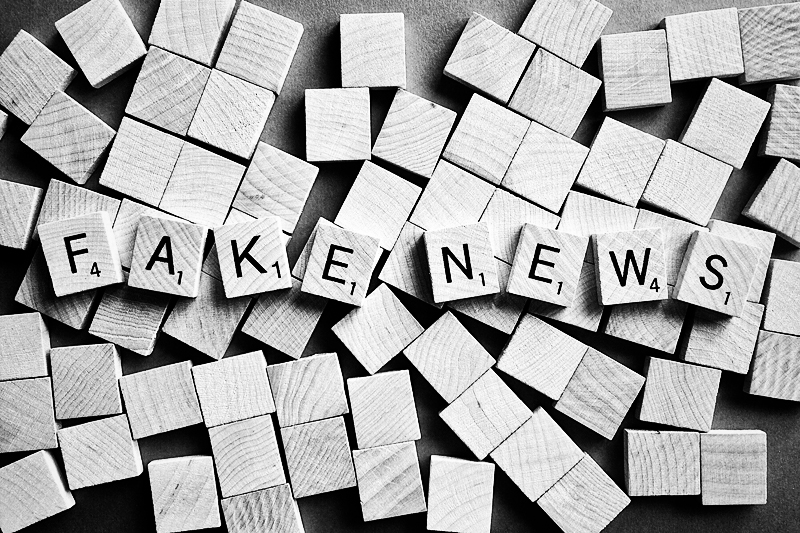By Hope Nyambe
Social media’s insurgency as a source of news and information has also given impetus to what is now
commonly referred to as ‘fake news.’ Defining fake news takes a continuum of aspects that include but
is not limited to, intentionally disseminating information that is explicitly or implicitly fabricated, deceptive
or crassly distorted factual news or information. This is done through satirical representation of facts,
exaggerated and decontextualized opinions and the simple false reporting of news. Advancements in
technology means that fake news can be transmitted globally to millions of people within seconds. But
what really fans fake news and how can you spot it?
You would think that a more contextualised response to what fans fake news would squarely point to
how people access information and the laws that surround the same. Further enactments of laws
restricting access to information naturally should led to a ‘shortage’ of information and therefore giving
rise to speculation and misinformation. Paradoxically, the answer lies in the ease in which people can
share ‘any’ information on digital platforms such as Facebook, twitter and Instagram.
Digital platforms such as Facebook and WhatsApp simply make anybody a source of information or
opinion leader. Various research on fake news has shown that, apart from the ease of sharing content
on social media feeds, eye- popping headlines, viral videos, pictures etc make information absorption
much easier even without evaluating the substance of the information or reading it. This is what is
referred to as a “Rumour Cascade’’ or “Rumour Mill.” Fake news, propaganda, decontextualized
information, and opinions distorted as facts, are in unbroken chains continuously reposted on various
digital platforms without scrutiny. This in essence creates a viral avalanche of unsubstantiated
information. And like an Avalanche, the more it gains momentum, the more damage it causes.
Due to the high level of social engagement through mediums such as Facebook, fake news has in
some instances had higher public engagement than mainstream news sources. This has led to fake
news culminating into violent events and attacks on innocent people, societies or businesses. There
have been attacks for instance of Chinese investments on the opperbelt solely based on the circulation
of fake news on social media.
Politically, fake news has the potential to polarise society. To mention for instance, during the run up to
both 2015 and 2016 presidential elections in Zambia, there were sustained attacks on the presidential
candidates that hinged purely on fake news. This involved alleging Satanism, alcoholism, ill health of
the presidential candidates. In a country like Zambia with strong Christian convictions, such fake news
has a large impact on the outcome of electro results, sometimes even over shadowing key campaign
messages such as economic reforms. .
Economically too, the consequences of fake news are damaging. Earlier this year, a video went viral on
social media alleging that a brand of margarine was not safe for human consumption. Apart from
leading to a drastic fall in the sales of the same product, the makers of the product also had to invest
millions of Kwacha in managing the crisis. On national and international level, fake news has affected
investor confidence, lead to fluctuations of stock market prices and general market instability.
How do you deal with fake news? There is always the argument of tighter media regulations and stiffer
punishment for people / organisations puddling fake news. However, such a move raises concerns of
infringing on people rights to information and speech. Media scholar argue that the best way of
countering fake new starts by first spotting fake news. There are normally tell –tell signs that will signal
that this is fake news.
The first thing to do is to check the credibility of the author, individual or organisation that has posted
the information. A simple google search will reveal the credibility of the source. Most fake news from
individuals will be posted as ‘cited’ material without attribution to credible sources or authority. For
organisations, look at for their website details. Simple generic requirements such as contact us’ ‘about
us' and other information posted on their website will tell if it’s a reliable source of information or not.
Counter check their information with other organisations.
Secondly, scrutinise what is being communicated. What is the content of the message and is it
information that is being reported on multiple reputable sources. Genuine news will normally feature on
various reputable platforms, with contributions from various experts on the subject matter. Fake news
tends to be reported from a single source and normally not covered by reputable organisations. In
cases where the information is reported on various media platforms, check for any discrepancies in the
information reported.
Thirdly, pay attention to the quality of the information and its timeliness. Reputable sources will normally
employ professional high level proof readers who adhere to high grammatical standards. Spelling
errors, poor punctuations are all an indication that it might be fake news. Be savvy to check on the
timeliness of the event being reported, is it something current or recent? Speculative fake stories will
normally have unspecified timelines.
Finally, take whatever you read or watch with a pinch of salt. Just because something is in the papers
or is reported on news does not necessarily make it accurate or true.
About the Author.
Hope Nyambe is a Corporate Affairs Specialist for Stimuli PR, a media and public relations guru.



Thomas Smith
Ut sit amet accumsan tellus. Morbi commodo maximus efficitur. Vivamus eu nunc scelerisque massa neque, ac mollis libero pretium sit amet.
Monica Brandson
Ut sit amet accumsan tellus. Morbi commodo maximus efficitur. Vivamus eu nunc scelerisque massa neque, ac mollis libero pretium sit amet.